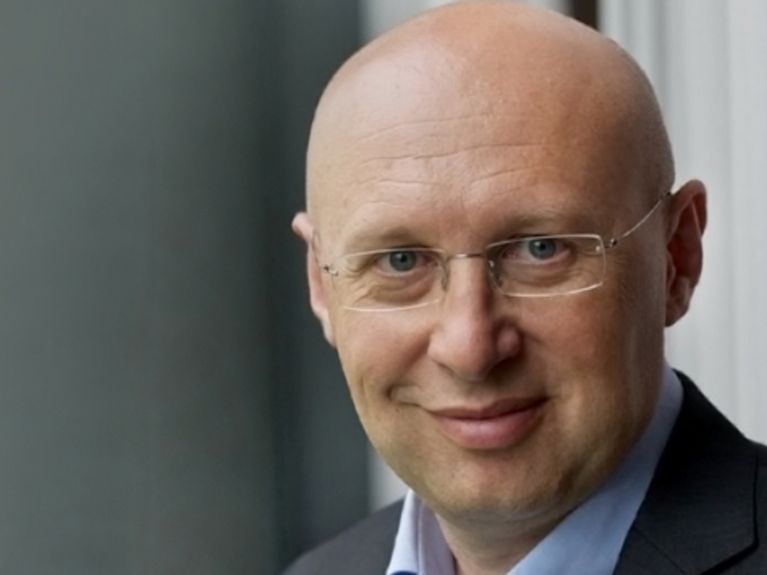Nobelpreis für Stefan Hell
Verleihungszeremonie in Stockholm

Bildquelle: Bernd Schuller/MPI für biophysikalische Chemie
Am 10. Dezember verlieh Schwedens König Carl XVI. die Nobelpreise für Medizin, Physik und Chemie. Der deutsche Physiker Stefan Hell teilt sich den Preis für Chemie mit Eric Betzig und William E. Moerner. Die drei Wissenschaftler erhalten die Auszeichnung für die bahnbrechende Entwicklung eines neuartigen optischen Mikroskops, mit dem Forscher zehnmal kleinere Strukturen als bisher erkennen können
Das linke Bild wurde mit einem herkömmlichen Lichtmikroskop (konfokal) aufgenommen. Gezeigt werden Strukturen im Zellkern (gelb). Die Verteilung der einzelnen Strukturen sind im rechten Bild viel deutlicher sichtbar. Diese Aufnahme wurde mit einem STED-Mikroskop gemacht. Damit können in biologischen Strukturen, Auflösungen von unter 30 Nanometern erreicht werden. Bildquelle: Deutsches Krebsforschungszentrum, in Kooperation mit der Abteilung Molekulare Genetik - Prof. Dr. Peter Lichter
The STED microscopes developed by Hell are used worldwide for researching biological processes and contribute to the rapid progress in medical basic research. In his capacity as head of the Division Optical Nanoscopy at the German Cancer Research Center (DKFZ) in Heidelberg, Hell and his team work on further developing STED microscopy in medical basic research. The huge advantage of the method is that also living cells can be investigated on a nanometre scale. "It is a great feeling to see STED microscopy giving such a huge boost to medical basic research", says Hell.
Readers comments